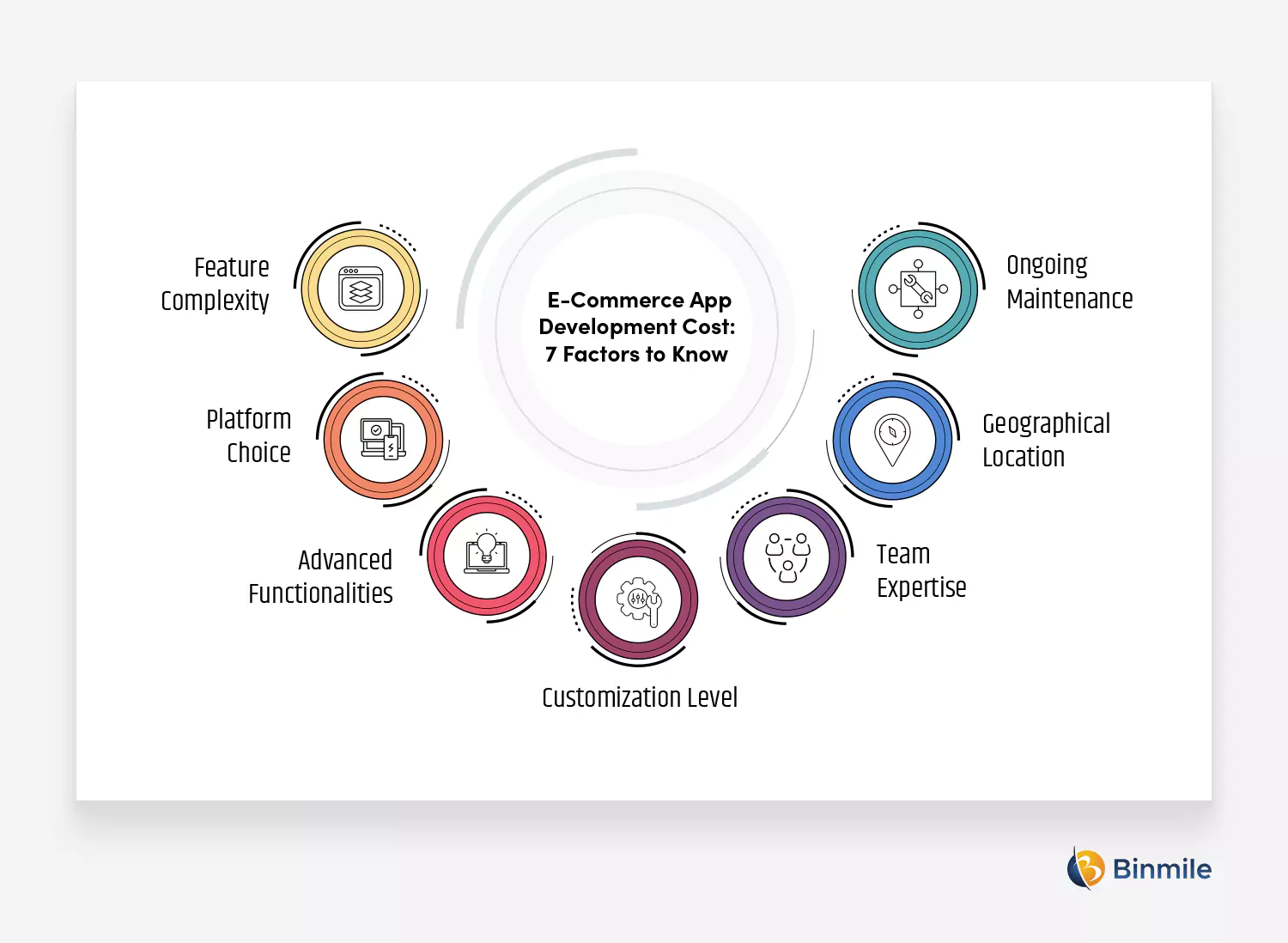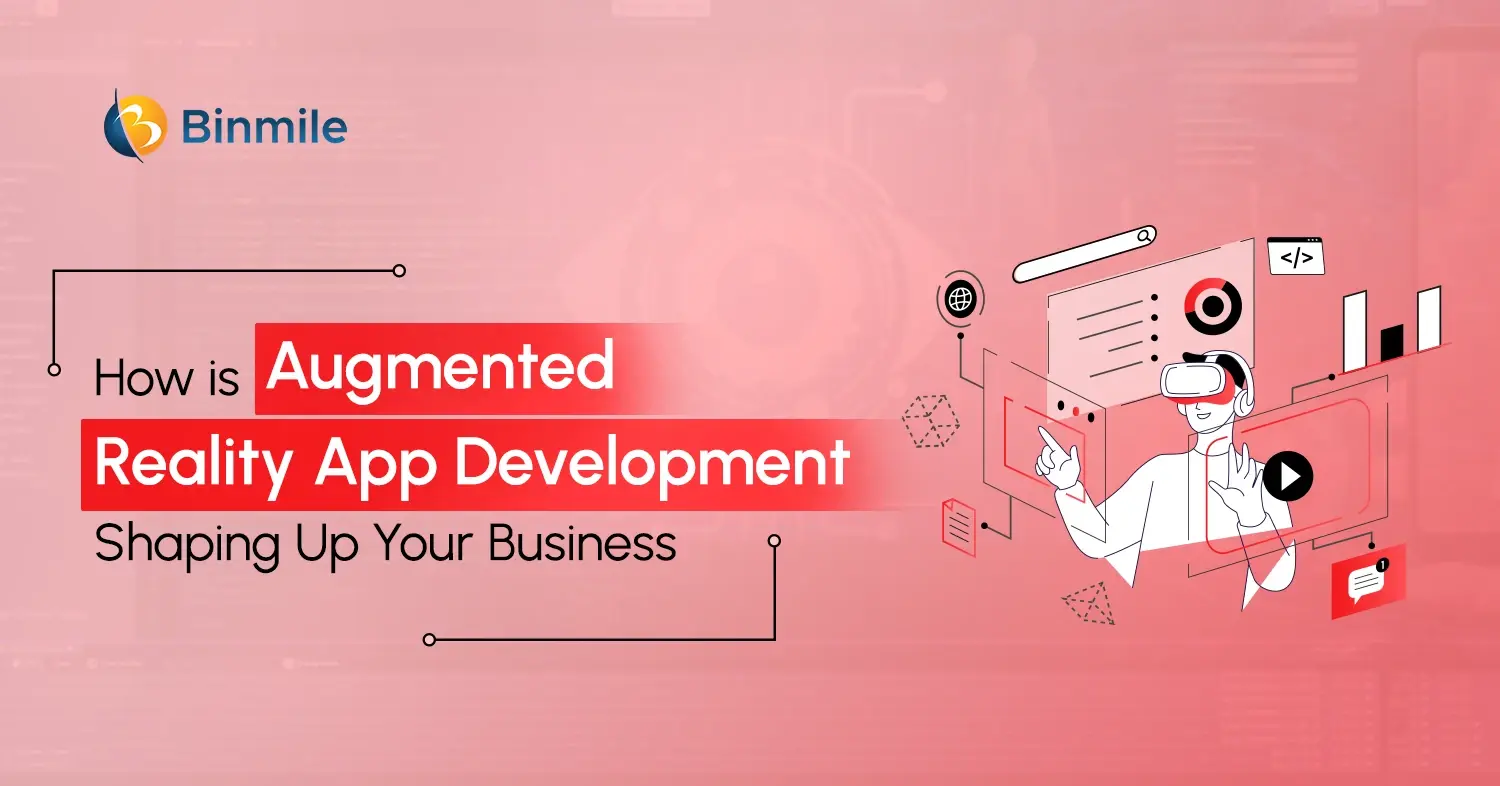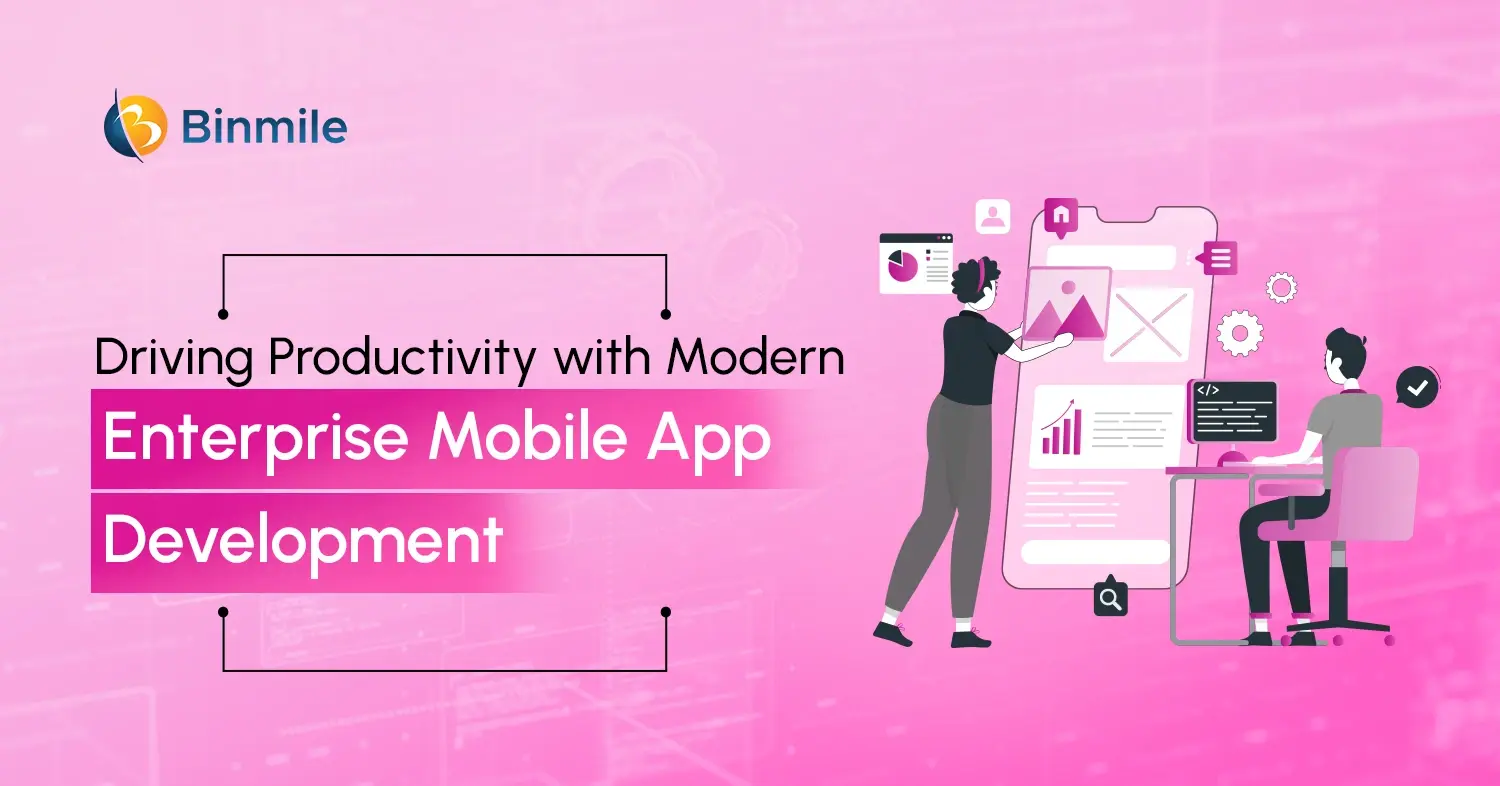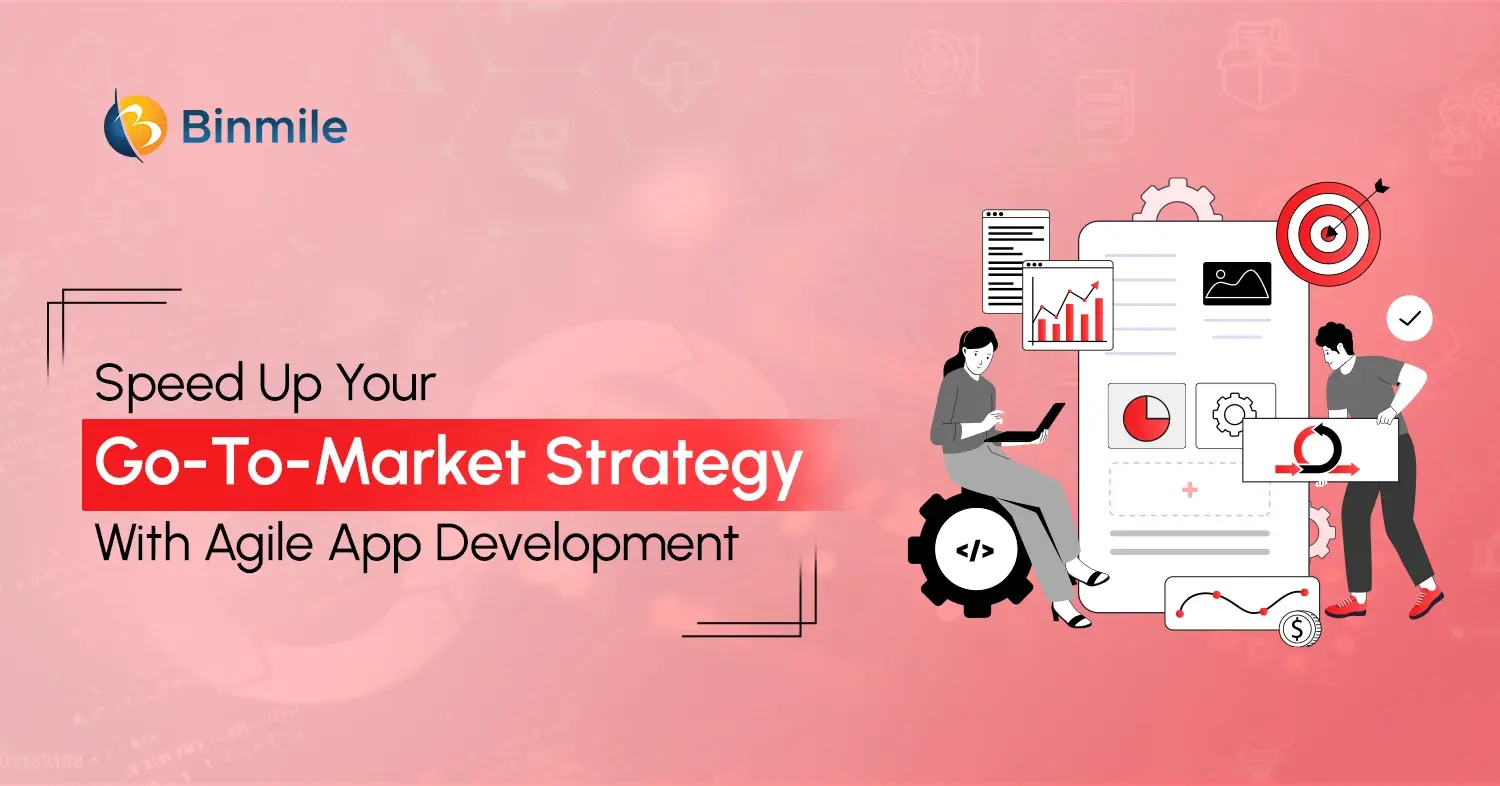- 7 Factors Influence Cost of eCommerce App Development
- benefits of building MVP for E-commerce
- Benefits of Developing MVP for E-commerce
- budget friendly e-commerce app
- Building an e-commerce app development
- impact your E-commerce app development
- Minimum Viable Product Approach for E-commerce
- what influence the cost of e-commerce app development
- what is the cost of E-commerce App Development
The retail and E-commerce industries are compelled to reshape their online store strategy to cater to the changing customer preferences amidst the rapid pace of technology. Naturally, most E-commerce businesses have opted for eCommerce mobile apps, it’s full of challenges though, but the result is worth the risk. However, risk doesn’t solely refer to the failure or success of the eCommerce application, but rather what is the cost of E-commerce app development, or will you get ROI while investing in the technology?
Building an e-commerce app development, especially an MVP demands a strategic approach to budgeting. It becomes essential to understand various factors that can define or impact your E-commerce app development or e-Commerce website development. When you have an insight into the reasons or factors that may impact the costs, you are propelled to make informed decisions at each stage of app development.
So, let’s understand what are the key factors that influence the cost of E-commerce app development, the benefits of building MVP for E-commerce, and tips to lower your app development cost.
What is the Cost of E-commerce App Development?
There’s no right answer to this question as the costs for developing e-commerce apps vary depending on software code complexity, features, or resources required to develop them. Still, to give you a range, a mobile E-commerce app can cost somewhere between $10,000 and $500,000. Thus, based on the complexity of the app, these are some rough estimates:
- Basic e-commerce app: $10,000 – $50,000
- Mid-range e-commerce app: $50,000 – $150,000
- Complex e-commerce app: $150,000 – $500,000+
Cost of E-Commerce App Development: 7 Factors to Know
We’re just providing rough estimates, and the actual cost may differ depending on the project requirements. We recommend you seek an app development company to get a detailed cost estimate before you begin development. For now, here are the 7 such factors that can define the E-commerce development cost:

1. Feature Complexity
The complexity of your e-commerce app’s functions is closely related to its development cost. For example, building a complete product catalog with advanced searching and sorting functions as well as an efficient secure payment system will take more time to develop resources.
- Basic features: $10,000 – $30,000
- Advanced features (e.g., AI, complex payment systems): $30,000 – $100,000+
2. Platform Choice
There are financial considerations in deciding between iOS, Android, and cross-platform development. Creating products for one platform means you must conform to its rules, which may not apply to other platforms and may increase costs. However, with cross-platforms eCommerce app you not only enjoy the features and benefits of both platforms but it’s cost-effective also.
- Single platform (iOS or Android): $15,000 – $40,000
- Cross-platform development: $20,000 – $60,000+
3. Testing and Quality Assurance (QA)
Both software testing and QA help you with the reliability, functionality, and security of your E-commerce mobile app. It aims to identify and address potential issues before the app goes live, allowing customers to shop without any security or performance-related hiccups. However, a secure E-commerce environment goes beyond just testing and QA. It’s crucial to implement robust e-commerce security best practices to create a multi-layered defense system.
- Basic Testing: $2,000 to $5,000
- Extensive Testing and QA: $5,000 to $10,000
- Rigorous Testing: $10,000 and above
4. Customization & Design Level
Customization, whether in the realm of user interface design or backend development, has a big effect on costs. If the app needs to be customized extensively so that its aesthetic or business processes correspond perfectly with those of a unique brand, then extra design and development work is required.
- Basic customization: $10,000 – $30,000
- Extensive customization: $30,000 – $80,000+
5. Integration with Third-Party Apps
To make your E-commerce app stand you might need to integrate not only advanced features but also other third-party apps like payment gateway integration. Doing so can be complex and time-consuming, and can increase the cost of mobile e-commerce app development significantly.
- Basic Integrations: $1,000 to $5,000
- Intermediate Integrations: $5,000 to $10,000
- Advanced Integrations: $10,000 and above
6. Geographical Location
The location decides the E-commerce mobile app development cost because there can be regions where the hourly rates are lower or you face difficulties with communication and project management. Therefore before selecting a software outsourcing development company in USA, be mindful of where the development team is situated as it can lower or increase the budget.
- Offshore development: $15 – $80 per hour
- Onshore development: $80 – $150+ per hour
7. Ongoing Maintenance
Your product, no matter how brilliantly built, cannot survive without proper feedback and improvements. Post-launch the app needs equal maintenance and regular updates. Developing and maintaining software or an e-commerce app are not just one-off expenses; you should also budget for ongoing updates, bug fixes, and feature enhancements.
- Standard maintenance: 15-20% of the total development cost per year
- Enhanced Support (regular updates and new features): 20-25% of development cost per year
Transform your e-commerce with our complete app solutions for increased sales and customer satisfaction.
Budget-Friendly E-commerce App Development: A Step-by-Step Guide
There’s no doubt that building an E-commerce app, whether cloning an existing app or developing it from scratch, it’s a time and money-consuming effort. However, an E-commerce mobile app development company can navigate the e-commerce app development process with a budget-friendly mindset. Let’s explore how to build an E-commerce app on a budget.
- Strategic Feature Selection: Rely on core functions that directly influence user engagement and satisfaction. Doing so will save you development time and costs, as well as ensure your MVP meets the basic needs of its target audience.
- Cross-Platform Development: Flutter or React Native app development greatly lowers development efforts as well as the costs of maintaining two separate repositories of information (or codebases). Without compromising on the user experience, cross-platform development is economical.
- Minimum Viable Design: Streamline the design with elements necessary to your brand identity and per customers ‘expectations. Don’t add unnecessary frills which will increase your budget unnecessarily.
- Agile Development Methodology: Agile methodologies can help your top app development companies control costs because they let you adapt to changing user requirements. That way, your budget is put into the things that matter most, and make improvements where it counts.
- Leverage Open-Source Solutions: Time and money can be saved by using pre-built, community-reusable solutions for commonly encountered facilities–payment processing or authentication. But make sure the selected open-source tools match your project’s security and performance needs.
- Consider Outsourcing App Development: Software development outsourcing is an effective strategy to significantly reduce labor costs, especially if you choose a location with lower hourly rates. However, ensure that you go for a reputable partner with a proven track record to leverage the expertise without exceeding your budget constraints.
Also Read: E-Commerce Dynamic Pricing
How an MVP Can Accelerate Your E-commerce Growth: 5 Key Benefits
Developing a Minimum Viable Product (MVP) for an e-commerce platform is a strategic approach that enables businesses to test their ideas with minimal resources while ensuring scalability and adaptability. Here are the key benefits of launching an MVP for e-commerce:

- Cost Efficiency: Building a full-fledged e-commerce platform requires substantial investment in development, design, infrastructure, and the right eCommerce architecture. With an MVP, businesses can minimize initial expenses by focusing only on core functionalities, allowing them to allocate resources efficiently. This approach helps in reducing financial risks while still establishing an online presence.
- Rapid Time to Market: An MVP allows businesses to enter the market faster by launching a simplified version of the platform with essential features. This speed gives companies a competitive edge, allowing them to start operations, generate revenue, and refine their offerings before competitors introduce similar solutions.
- Iterative Improvement: Instead of building a feature-heavy product that might not align with customer needs, an MVP follows an iterative approach. Businesses can gather real-time insights, assess user behavior, and implement improvements based on actual demand, ensuring the final product is optimized for success.
- Risk Mitigation: Investing in an e-commerce platform without validating its market demand can be a high-risk endeavor. An MVP reduces this risk by allowing businesses to test their concept before committing to large-scale development. If adjustments are needed, they can be made without significant financial losses.
- Customer Feedback and Validation: The MVP model enables businesses to collect valuable customer feedback early in the development cycle. This direct input from real users helps in refining the platform, ensuring that future updates and feature additions align with actual market needs rather than assumptions.
Why You Need a Minimum Viable Product Approach for E-commerce
Timing is everything — especially when it comes to e-commerce. Imagine the missed revenue chances whenever your launch of E-commerce is delayed for whatever reasons. So how do you develop and run your E-commerce app in the best (read: fastest) ways? MVP or minimum viable product ecommerce approach is the key. You may wonder, what is an MVP in e-commerce? A minimum viable product is the driving force behind a quick and easier development and deployment of the eCommerce project. The primary goal of an MVP is to deliver the new features necessary for a working and testable eCommerce app in the shortest amount of time.
There are benefits to choosing Minimum viable product development services for your e-commerce app. One of them is expediting the development process, thus reducing time to market. Additionally, an MVP helps validate your app’s viability and market fit, ensuring that subsequent features align with user needs and preferences. To make the most of this approach, it’s important to understand how to pick the right MVP development agency—one that aligns with your product vision, tech needs, and user goals. This empowers your SDLC team to efficiently launch, learn, and refine e-commerce apps in response to user feedback and market dynamics.
Here are some steps to help you effectively build an MVP for E-commerce project:
- Identify crucial features like product listing and secure payment for a seamless shopping experience with GenAI.
- Launch the MVP, gather user feedback, and iterate for alignment with real user needs.
- Prioritize core features for a quick release and initial user engagement, and introduce additional features gradually to user’s feedback and market demands.
- Utilize agile development methods for flexibility and quick adaptations during MVP iterations.
- Implement robust analytics to track user behavior and gather insights for informed feature enhancements.
Also Read: Steps to Build MVP Project
Closing Thoughts
It’s an indisputable fact that mobile apps let you earn a massive market share globally, in addition to enhancing and smoothening consumers’ buying experience. Since eCommerce app development has become a need of the hour for every business to sustain digitally, they often get stuck with a concern– “e-commerce app development cost.” These are often ignored in the earlier phases of software app development planning, making it a key factor that makes or breaks the success of your E-commerce project. Of course, developing a mobile E-commerce app demands a significant investment, but it also offers a substantial return on investment for businesses. All you need to know is to understand the cost-influencing factors before proceeding with the app development process to have an accurate project delivery experience.
In this blog, we discussed the factors that can impact the cost of E-commerce development and also offer deep insight into how creating an MVP not only ensures a budget-friendly approach to launching your E-commerce app into the marketplace but does so without impacting your budget or user’s experience. To ensure the success of your E-commerce app development project, we recommend you partner with a professional E-commerce mobile app development company in USA that has a proven record of delivering successful e-commerce solutions and helps you enhance its performance and user experiences.









